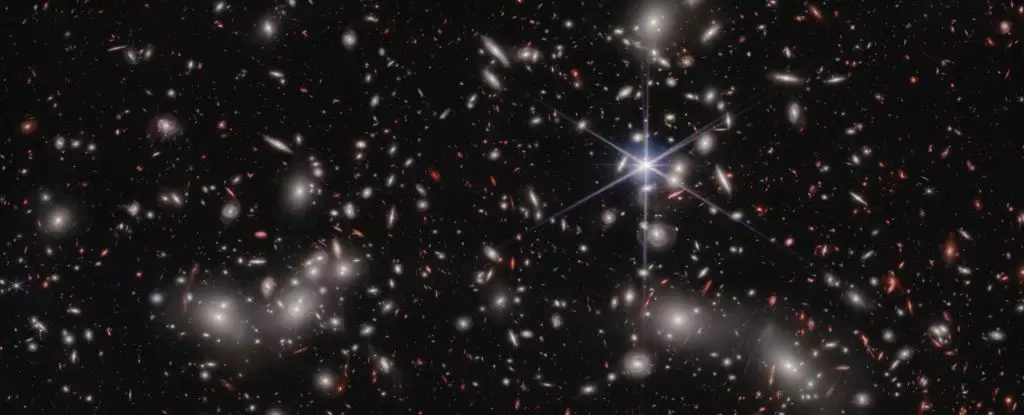In an extraordinary journey through time, scientists have recently illuminated our understanding of the early Universe, specifically how light emerged from an initially dark and chaotic void. Astrophysical research enhanced by the Hubble and James Webb Space Telescopes has unveiled a critical piece of this cosmic puzzle: the not-so-mighty dwarf galaxies. A study published in February has shed light on these ultra-faint galaxies, proposing their integral role in cosmic reionization—the moment when the Universe transitioned from a dark, foggy expanse to one filled with light and structure. Iryna Chemerynska, an astrophysicist at the Institut d’Astrophysique de Paris, emphasized the significance of these dwarf galaxies, stating that their ionizing photons were crucial for transforming neutral hydrogen into ionized plasma during the Universe’s evolutionary narrative.
Right after the Big Bang, the Universe was a hot, dense space where light struggled to penetrate through a thick haze of ionized plasma. This was an age characterized by darkness, where photons merely scattered off free electrons, rendering the cosmos nearly invisible. However, as the Universe expanded and cooled over about 300,000 years, protons and electrons began to coalesce into neutral hydrogen and helium. Despite this shift, the lack of light sources meant that few photons could emerge from this sea of hydrogen. That changed with the birth of the first stars, which generated powerful radiation capable of stripping electrons from hydrogen atoms—essentially reionizing the gas surrounding them. This led to the end of the cosmic dawn roughly one billion years post-Big Bang, signaling the Universe’s transition into a glowing, ionized state.
Traditionally, scientists postulated that the dominant sources of this cosmic clearing were massive entities—supermassive black holes and large galaxies engaged in vigorous star formation. These hypotheses were bolstered by the observable brightness we associated with such grand structures. However, the newly acquired data from the James Webb Space Telescope is challenging these long-held assumptions. The telescope’s observations indicated that dwarf galaxies, often overlooked due to their diminutive size and luminescence, were unexpectedly abundant and played a more vital role in the Universe’s evolution than previously believed.
An international research team, spearheaded by Hakim Atek from the same Paris institute, utilized Hubble data alongside the novel insights from JWST to analyze the galaxy cluster Abell 2744. This cosmic lens, due to its considerable mass, bends space-time and magnifies distant light, enabling researchers to peer closely into the early Universe. Their findings revealed an astounding abundance of dwarf galaxies—far exceeding larger counterparts by a staggering ratio of 100 to one.
Despite their small size, the amount of ionizing radiation emitted collectively by these dwarf galaxies was found to be four times greater than that produced by their more massive neighbors. This finding positions dwarf galaxies not as mere footnotes in cosmic history, but as fundamental players in the reionization process. Atek accentuated this revelation by asserting that these low-mass galaxies are capable of generating more than sufficient energy to sustain the reionization of the Universe, thus altering our understanding of how light first began to permeate the cosmos.
The implications of this research extend beyond mere curiosity. Equipped with the groundbreaking telescopic data from JWST, scientists are on the cusp of rewriting the narrative of cosmic evolution. However, the study is still in its infancy; researchers caution that their conclusions were drawn from a single cosmic patch, highlighting the need for broader investigations to confirm that this trend holds true across the Universe.
In the quest to unravel the mysteries of reionization, the astronomical community is energized by these findings, bursting with potential for further exploration. The momentum generated by such revelations underscores the important role of advancing observational technology, particularly in unraveling the enigmas of the early Universe. The work of the team and the capabilities of JWST herald a new era in astrophysics, one where previously uncharted territories beckon for exploration. Researchers like Themiya Nanayakkara from Swinburne University highlight that we have entered a phase of discovery, where the previously misunderstood dynamics of our cosmos are finally within reach of human understanding.
As we venture deeper into the astronomical unknown, the story of dwarf galaxies uncovers a richer, more complex fabric of cosmic history. It reinforces not only the importance of these unassuming entities but also emphasizes the vastness of what we yet have to learn about our Universe’s early stages. The journey to illuminate the hidden corners of cosmic reionization continues, promising to unveil even more astonishing revelations along the way.


Leave a Reply